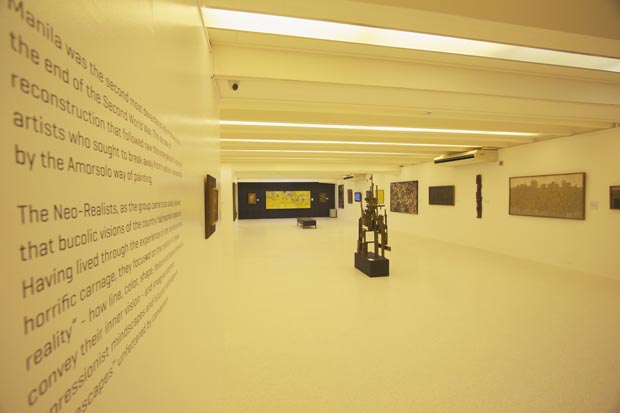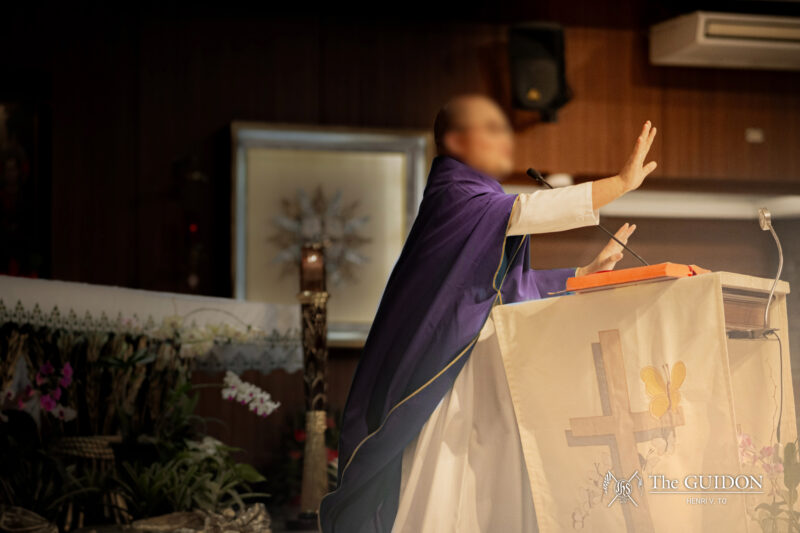Ateneo’s art scene is one of many paradoxes. The Ateneo Art Gallery is huge and presents over 600 works by Filipino and foreign artists, yet few students visit on a regular basis. Younger artists have made their name through the underground circuit and enjoyed fame among the student community, but continue to struggle against those who hold rigid definitions of what art is. What is art? What is fame? The closer you look the more complex it seems.
There always has been—and may always be—an aura of mystery and indefinability surrounding all art. Compared to the loud, aggressive presence of the university’s business organizations, Ateneo’s art scene is a quiet place (literally, in the case of the Art Gallery). Yet perhaps the greatest paradox of all is that this seeming silence does not mean there is nothing going on; in fact, those close to the art community will testify that it is bursting with life.
As the journalist Sir Harold Evans once said, “We have to be willing to wrestle with paradox in pursuing understanding.”
Under our noses
Founded in 1960 after painter Fernando Zóbel donated post-war art, the Ateneo Art Gallery has been home to the works of renowned artists such as Vicente Manansala, H. R. Ocampo, Arturo Luz and José Tence Ruiz. Apart from its permanent collection, the Ateneo Art Gallery holds temporary exhibitions every year such as retrospectives, art exchanges with partner institutions abroad or showcases of contemporary artists—the most recent one being Patricia Eustaquio’s cardboard fantasia Last Post.
Director and Chief Curator Ramon E. S. Lerma says, “The Ateneo Art Gallery is a resource that no other university has. Other university museums don’t have the same kind of collection, the same quality, the same focus and the same international reputation and program [that] the Ateneo has.”
But despite the gallery’s rich history and stellar industry credentials, student traffic is slow during most of the year. In fact, sophomore and Gallery regular Keisha Kibanoff says, “I’ve discovered that some students don’t know it exists at all.” To the overly practical, art galleries might seem something dreary and uninteresting. Others may respect the craft but are intimidated by art itself because they perceive it to be too cultured or too cerebral.
However, all is not lost. The Art Gallery’s biggest annual event, the Ateneo Art Awards, gives what Lerma calls “a cursory view at the way which contemporary Filipino art is developing.” The works of nominees are exhibited for some time before the actual awards ceremony. These fresh works seem to strike a chord with students, who visit more during the Art Awards exhibition season.
Lerma believes the Gallery has a lot to offer for those who take the time to visit and says that the ability to enjoy and experience art is an important part of Atenean life. “Art is something that awes, something that inspires,” he says.
Form with function
In comparison, Atenean student art, which does not usually find a place in the Art Gallery, is more underground in nature. In the advent of websites such as deviantArt and Tumblr, where students publish digital portfolios, getting noticed depends less on physical presence and more on being internet-savvy. If the work does have physical manifestations, it is often mass produced in folios such as Heights.
Take for example recent graduate and Loyola Schools Awards for the Arts recipient Rob Cham. Known for his minimalist visual style, his artwork and webcomics are available in his gallery—that is, his wildly popular Tumblr. He has also made a name creating promotional art for events with fellow Ateneans graphic designer Kitkat Pecson and illustrator Kasey Albano, as part of the design group Hypervodka.
Though artists such as Rob Cham enjoy more name recall among their fellow students, it’s hard to argue that that they’re more popular than the established artists of the Ateneo Art Gallery. After all, save for exceptional cases, their audience is largely limited to their peers and the work itself is also considerably different.
A lot of student art serves an immediate purpose. Art is used to promote an event or cause, sold as prints or on t-shirts. Here, the student artist plays a number of roles: advocate, entrepreneur and even activist for a cause.
Though seemingly mainstream in production, such art is still the alternative in a scene that is largely defined by gallery exhibitions and a reputation for highbrow exclusivity.
In fact, in contrast to the “art for art’s sake” movement, the goal of these student artists is not to produce work that exists simply to be beautiful but work that is beautiful so it can be functional. T-shirts are meant to be worn; webcomics are meant to entertain; posters are meant to publicize. Perhaps, then, the accessibility of students’ art stems from its inclination towards usefulness—the audience has a direct benefit from the art.
“There are a lot of misconceptions about art in Ateneo,” says Frances Caluya, the president of Artillery, the home organization of Information Design majors. “[People] think when you’re an art major … it’s more self-expression than anything else. That’s what we’re trying to counter: that notion that art is self-serving or elitist.”
The challenge
Art is complex: people perceive it in different ways and there are plenty of ways to define it. It can be an expression of the artist’s self, a document of generational neuroses, an exploration of social issues or something simply, undeniably pretty. At its heart, though, art is something that calls to be experienced—a stimulus which can inspire a plethora of emotions, from wonder to confusion to misery to disgust to bliss.
There’s no substitute for taking the time to walk into an art gallery or to check out a portfolio online—things that are both delightful and easy to do. Regardless of medium or platform, galleries and websites have the same purpose: to let artists share their work.
Ateneo’s art scene may be filled with paradoxes but one can’t say the artists haven’t done their part. It’s up to us, the audience, to embrace this scene and the whole experience it offers.







